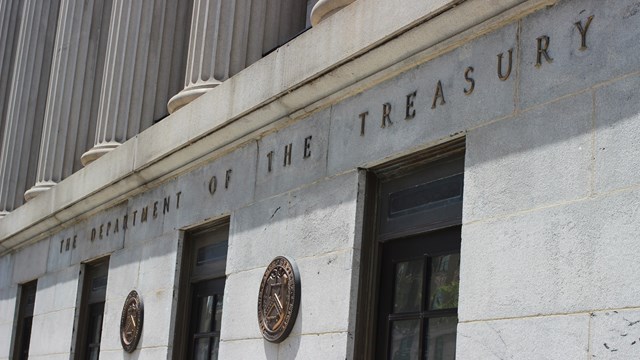At the height of the housing boom, some builders attempted to recapture profits lost in the price they paid for their properties by cutting costs spent on labor and materials, and many others could not find good contractors or obtain low prices for building materials. At the same time, finding competent and affordable contractors and workers became extremely difficult as New York bustled with a building boom that included building two major league baseball stadiums, rebuilding Ground Zero, and planning to build the Freedom Tower, the largest building in the world, in addition to thousands of condominium and rental units, all at the same time.
To make matters worse, many neophyte builders entered the builder business as the entrance requirements are still very low: other people’s money. To give every incentive to builders to cut corners, the then-New York State Attorney General, Eliot Spitzer, decided to deplete the resources of the New York State Law Department’s Real Estate Finance Bureau, while turning the attention of his office to Wall Street and other various extracurricular activities.
The other governmental body most responsible for policing the actions of builders, the New York City Department of Buildings (DOB), watched many of its most talented personnel leave for the money in the private sector, and the agency never had enough staff members to adequately inspect all of the condominiums being completed in the city. In addition, weak laws and regulations allowed builders to self-certify many aspects of the building process, without governmental supervision, and provided inadequate legal remedies to the victims of shoddy construction. As a result, scores of condominium buildings were built that were later found to require major repair and renovation after buyers had paid many millions of dollars for the privilege of discovering the construction defects present in their new homes.
Even in the best of building times, untested, newly constructed buildings are never entirely free of defects that require correction or repair after construction is deemed complete. While the better builders fix these problems, scores of less responsible builders seemingly try to thwart the efforts of homebuyers to compel their sponsor to deliver the dream home promised in the offering plan and the marketing materials.
Although the “Oscar” for Outstanding Achievement in Bad Home Building could go to many entities, the culprit that is single-most deserving of the award is the New York State Legislature for enacting Article 36-B (Sections 777 et seq.) of the General Business Law, the statutory “Housing Merchant Implied Warranty.” This statute overturned a 1988 decision, Caceci v. DiCanio Construction Corp., of the New York Court of Appeals, in which the highest court in the state rejected the age-old doctrine of caveat emptor (“buyer beware”) and provided all buyers of newly constructed homes with a common law warranty for damages arising from a builder’s failure to construct a house free from material defects and in a skillful manner.
Article 36-B trashed this broad court-made warranty and enabled builders to minimize their risks by contractually excluding all warranties except the warranty limited solely to meeting local building code standards. In the legislature’s defense, some judges in lower courts have decided that Article 36-B does not apply to buildings over five stories, and, therefore, that the new home common law warranty enunciated in Caceci still applies to newly constructed or rehabilitated buildings constructed with six stories or more. See, e.g., Bridge Street Homeowners Association v. Brick Condominium Developers, LLC, 18 Misc.3d 1128(A), 856 N.Y.S.2d 496 (Sup. Ct., Kings County, 2008). However, because such a reading is not specifically stated in the statute, and no appellate court has yet ruled on the question, developers’ attorneys routinely argue that the Legislature’s intent, in enacting Article 36-B, was to completely divest buyers of condominium units in high-rise New York City buildings of any but the most minimal warranty rights. (For more information on this subject, please read the following New York Law Journal articles: “Are Buyers of New Condos and Co-ops Subject to Caveat Emptor?” and “New Home Warranty, An Open Question Seeking an Answer,” written by the authors of the present article and available at www.alblawfirm.com.)
As a result, many sponsors use a delay and band-aid approach to avoid their responsibilities. Although it is not cost prohibitive for buyers to commence a lawsuit against their sponsor, continuing the litigation through the discovery process to trial could prove financially devastating to small buildings. Moreover, the average lawsuit also takes at least two years before a trial date is even selected, and can take even longer before a trial is completed. No developer will dispute that small repair/replacement problems will become much larger problems when neglected during the litigation process.
Even if buyers should achieve a court victory, the developer’s company may not have sufficient assets to cover the cost of repair and replacement of the building, and the unit owners may have to attempt to pierce the corporate veil and attempt to hold the individual developer personally liable. And many times the developer in name fails to be the same person who had the largest financial stake in the project which makes finding the money as elusive as the investors.
Despite all of the above, although the process can be costly and require a warrior mentality, most buildings have been able to organize and successfully obtain compensation from their developers. From our experiences with over one hundred of these buildings, we have compiled a protocol for buyers to follow to ensure that they may successfully obtain the home they were promised in the developer’s marketing materials and offering plan.
Organizing the Unit Owners
Power can be created with numbers. When attending a board or unit owner meeting for the first time, we usually read a quote often attributed to Margaret Mead: “Never doubt that a small group of thoughtful committed people can change the world. Indeed it is the only thing that ever has.”
A meeting should be called whereby all of the homeowners can meet and discuss their shared building problems. Many times, homeowners post signs in hallways, and the most common form of hallway sign used during the last two years will state the name of the Internet group where unit owners are sharing information. Invitations to an Internet group such as Google or Yahoo are essential first steps for organizing and creating a plan of action, but never provide a substitute for at least one in-person meeting of all the unit owners. This in-person meeting should be arranged allow participation through telephone conference-call access by those investors who cannot attend the meeting in person. One of the obstacles to forming a complete unified group is the difficulty in contacting investor owners who are not residents in the buildings.
If the sponsor-controlled managing agent fails to deliver this information, contact the resident tenants occupying the unit and/or review a copy of the recorded deed for the unit, available on ACRIS (the Automated City Register Information System, a part of the New York City Department of Finance website) which is likely to include the non-resident investor-owners contact address.
These meetings should be used to educate owners on their legal rights, to share information and common experiences, to organize a plan to convince the sponsor to deliver what it promised, and to trade information on how some homeowners handled certain issues when dealing with repair problems, as well as learning how the developer has reacted to different owner complaints.
The Plan of Action and
Notice Requirements
These meetings will also be used to develop a road map or plan of action. If the unit owners do not have control over the condominium board, a residents or homeowners association should be formed. Doing so does not require any formal filing or registration of the group with any governmental agency. For our clients, we usually take the name of the building and add the words residents or homeowners association, and they are then ready to function as a group.
Following Notice Requirements
in the Offering Plan
The notice requirements in the law should also be discussed. Unit owners should be warned that, if the sponsor is not notified of the problems in writing within the applicable time period specified either by law or by the offering plan, their legal rights may be extinguished. In addition, the method of complaint must strictly follow the notice provisions specified in the offering plan.
On more than one occasion, courts have short-circuited condo board and association efforts when the time to complain or the requirement of a certified mailing has not been followed. Virtually all sponsors use such provisions (which Article 36-B permits) to give buyer-owners as little time as possible to submit their complaints. Most offering plans provide buyers with only limited rights to repair or correct most construction defects, within strict time lines. Buyers need to review their plans very closely and follow them as strictly as possible to avoid sponsor disclaimers based on the technical contractual language of the offering plan.
Documenting the Problems
The Internet group should also be set up to share documentation of repair or replacement problems in the building. Unit owners should act in accordance with the “tree falling in the forest” adage. If a tree falls in the forest, and no one is present to hear it fall, did it really fall or make a sound when falling. In building battles, the tree never existed unless the fall was documented. All marketing materials should be collected. A picture of the building or unit defect should not only be captured with a camera, but such pictures or video of the defect must be taken with a newspaper in the picture or frame—preferably the New York Post or Daily News—not because we prefer these publications, but because they are easier to identify in the photograph. The presence of the newspaper demonstrates that the picture of the defect could not have been made before the date the newspaper publication date, and it will thereby assist in establishing the reliability of the photograph and/or video. Remember that a sponsor may attempt to discredit the problem and may claim that the defect did not exist at the time the unit was finished. We have also seen dated pictures discredited by a demonstration of how such a date can be falsified.
Almost every defect can be documented. One of the more common problems, the lack of heat or air conditioning can be documented by taking a picture of a thermometer touching the heater or air conditioner. The wind coming into a unit from the lack of insulation may be captured by video, and the uneven floors can be demonstrated on a video camera by watching a tennis ball roll across the floor. The damage from leaks and mold should be photographed, and expert reports should be used to verify the more serious and not easily discovered problems. For repeated problems, besides daily pictures, logs should be kept describing the problem and the sponsor’s responses. All receipts for monies spent fixing problems should be kept as well as contractor estimates.
Once you have documented a problem, it should be shared with the Internet group. Because of the varied backgrounds of people in the group, some members of the group will identify repair issues that have been overlooked by other owners in the building, but which may nevertheless exist throughout the building. By adding your finding to the group, there is a greater chance that all of the repair problems will be observed and the sponsor notified. It should be noted that the sponsor is not your landlord—the sponsor is required to deliver to you at closing the building that was promised upon execution of your contract, but if the construction is sues are not promptly documented, time will be used to thwart your efforts. All of the problems documented and collected by the group must be presented to the sponsor in writing. Your attorney should present the collective findings on behalf of the building and of the individual units owners with a demand for action or payment.
Hiring An Engineer
No matter how few problems may seemingly exist in a newly constructed building, a qualified, licensed engineer should be hired by the group to evaluate the units, the entire building, and its major components. Many of the most serious problems in a building are invisible and cannot be seen with the naked eye. Others take years to manifest themselves and require serious attention. The most common serious areas of concern in a rehabilitated or newly constructed building normally include the roof, boiler and elevator, and, in some buildings, problems that should have been caught on day one but may incubate for years before discovery.
Once the engineer’s inspection has been completed, all of the other building problems collected by the unit owners should be added to the list, and a letter of complaints should be sent to the sponsor by the unit owner or the owner’s attorney. In most cases, when this list is timely sent in accordance with the offering plan and New York law, a unit owner’s time to sue has been preserved. Any items not timely complained about may waive the owner’s right to compel the sponsor to complete, and/or repair or replace the defective item. Every newly-constructed building should hire the services of an engineer to do a physical condition survey of the building, in the same way that a person will schedule a physical exam by a doctor. Doing so should identify all of the problems that need to be caught early while the unit owners still have a means of redress against the sponsor.
Allowing the Builder to
Repair the Building
Besides blaming the unit owner for causing the damage, or telling the unit owner that he or she is not your landlord or telling the unit owner to “Sue me. It will take you years before we even have a trial,” or that the unit owner must be imagining the problem because “We live here too,” the most popular sponsor excuse is that the unit owner failed to give access to the sponsor’s workers to fix the problem.
No matter how badly the condominium is built, every unit owner must allow the sponsor an opportunity to fix the problem. In many cases, the sponsor will use a band-aid approach, which temporarily cures the problem without the sponsor having to spend the money required to completely fix the problem. To deal with this common practice each repair should be reported and then checked by the unit owner’s engineer to determine whether the repair was sufficient. In most cases, after much time has passed, the sponsor agrees to pay a sum of money rather than feigning repairs.
Unless the sponsor cooperates and completes the repairs, more aggressive action must be considered, including legal action, demanding seats on the board of directors, working with the proper governmental agencies, as well as organized protests. Local council members, state, and federal governmental representatives have also provided extremely helpful assistance in pressuring the sponsor to resolve problems.
Keeping Punch Lists
To support a building or unit owner’s claims against the sponsor, to show the real defects and the sponsor’s failure to deliver what was promised, the board and individual owners need to preserve their copies of (a) all “punch lists” and other written complaints they submit from time to time to sponsor representatives (whether by formal notice, regular mail, email, or any written notes of any kind), and (b) all of the marketing materials, advertising, and/or promotional sheets the sponsor or the sponsor’s sales representatives furnished them during the pre-contract period to induce them to purchase their unit.
Owners should also keep print-out copies of all Internet advertising the sponsor did for the project on any sponsor website, including copies of all web pages featuring written descriptions and/or pictorial images of the residences to be built and any amenities to be associated with the development, as part of the finishes product the developer was promising and representing to and would be delivered upon closing.
Developers will attempt to limit a purchaser’s claims by pointing to the “four corners” of the contract and the narrow language of the offering plan (complete with all extra-contract disclaimers) to avoid liability for not delivering what the purchaser was led to believe he or she would receive at the end of the transaction. Nevertheless, promotional or marketing materials that are blatantly false can be used as evidence to support a claim of common law fraud in the inducement against a sponsor who knowingly uses such ploys to deceive its victims.
Adam Leitman Bailey and John Desiderio are partners in a 17-attorney real estate law firm Adam Leitman Bailey, P.C., based in Manhattan.







Leave a Comment